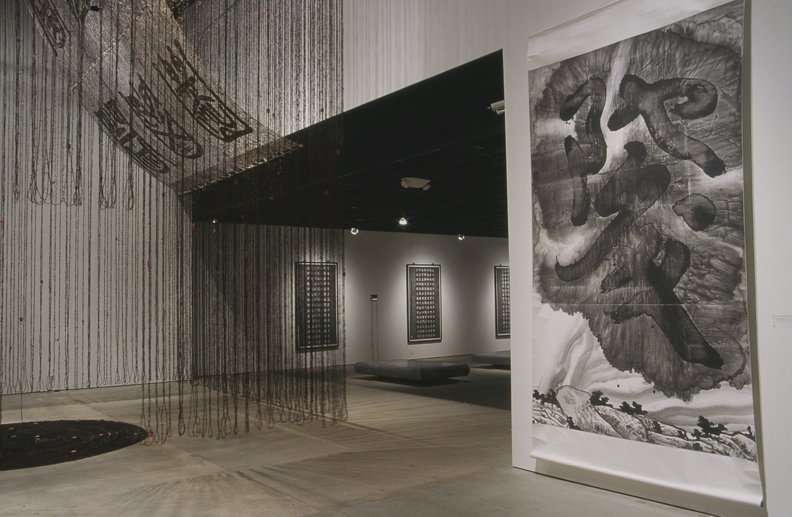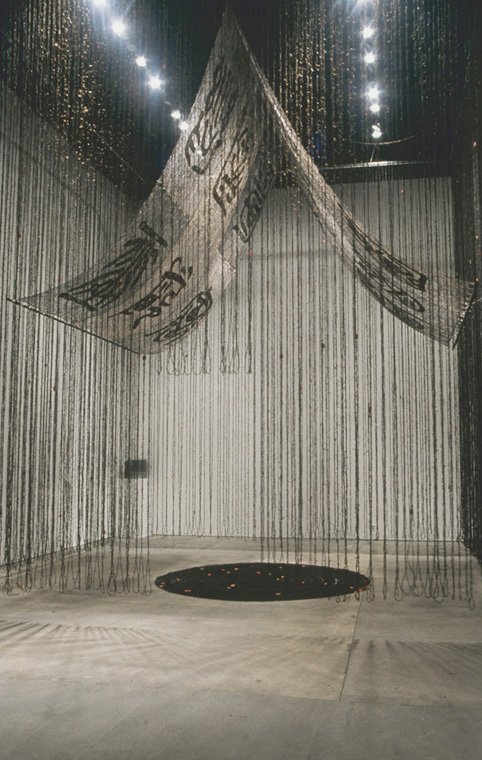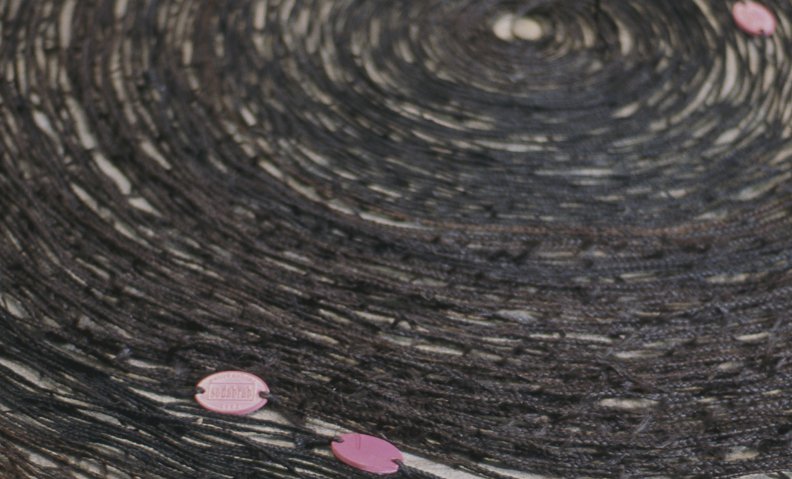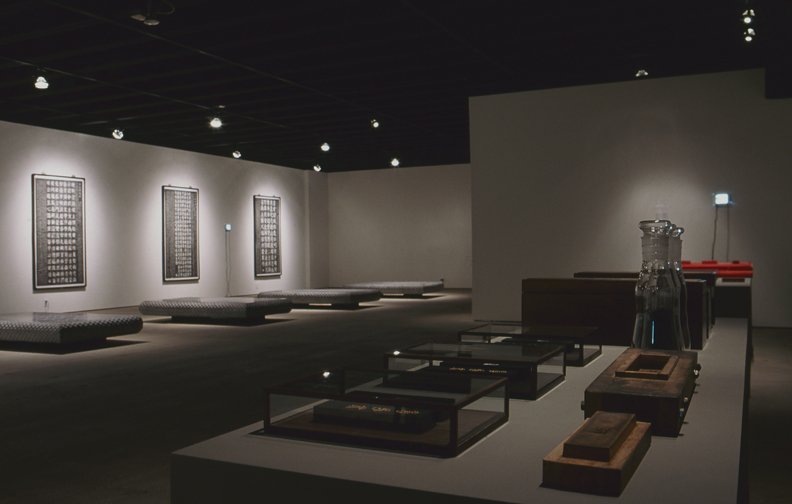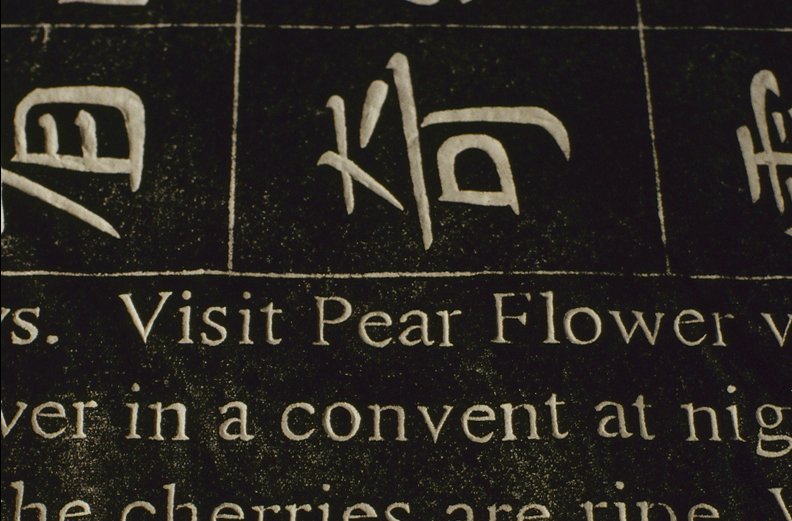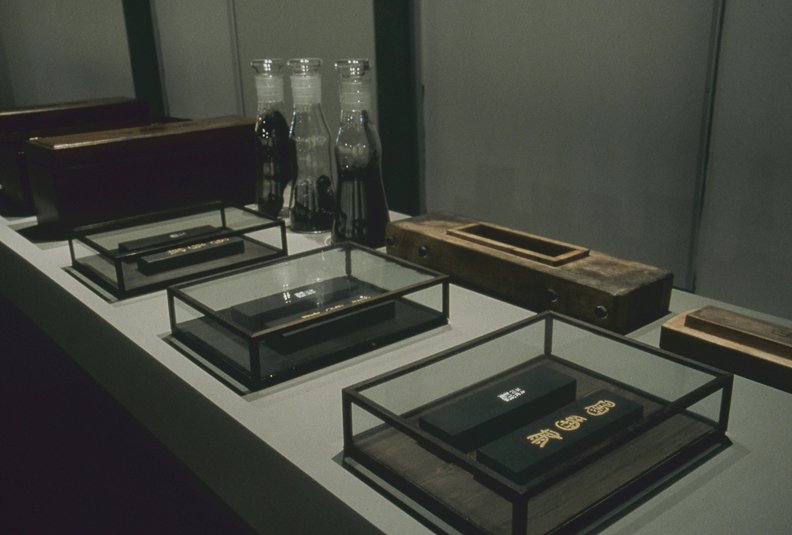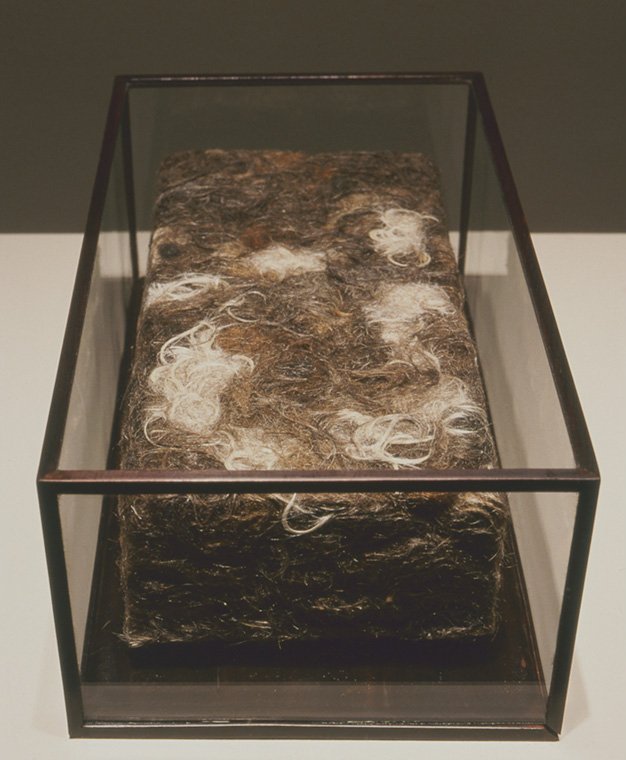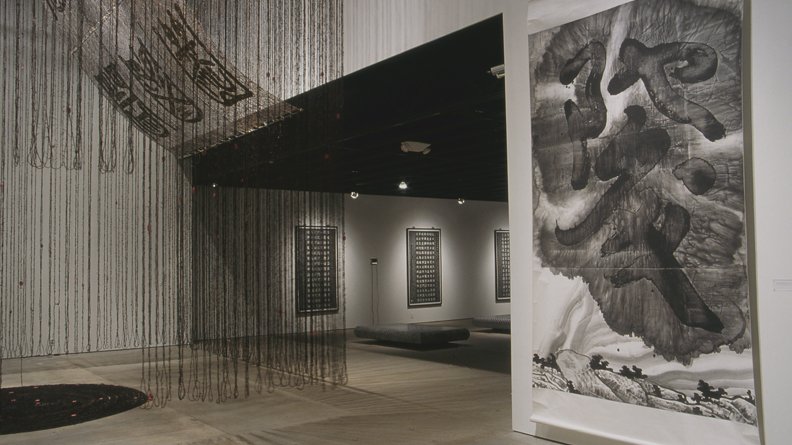
Wenda Gu: from middle kingdom to biological millennium
06.06.2003 - 07.12.2003
Wenda Gu is a leading member of a group of diasporic artists that includes Xu Bing, Shirin Neshat, and Chen Zhen (1955-2000). Homi Bhabba has referred to this diaspora as a “third space,” a location between East and West which is defining the arts of a globalized world in the 21st century. Wenda Gu undermines and reinvigorates traditional Chinese art forms such as seals, stone carving, calligraphy, and ink painting by infusing them with a contemporary sensibility.
Born into a family of artists in Shanghai, including a grandfather persecuted for his theatre work, Gu developed his art early on by painting Mao posters for the Revolutionary Guard. He attended the Shanghai School of Art and the famous Zhejiang Academy of Fine Arts. Gu was a pivotal artist in the new scholar painting movement where he combined traditional Chinese ink painting and Western surrealism. He also played an active role in the notorious ’85 Art Movement, which led to the closure of his exhibitions in China. Following the Open Door policy introduced in 1978, the ’85 Art Movement exhibitions were the first to publicly challenge official definitions of art. In response to the academic rigor and obedience of artists to ancient paradigms of ink painting, Gu infused the tradition with conceptualism.
In 1987, Gu moved to the United States where his career moved in a diasporic and global direction. Through such exhibitions as China Avant-Garde (National Gallery, Beijing), Fragmented Memory: The Chinese Avant-Garde (Wexner Center for the Arts), Inside Out: New Chinese Art (Asia Society and San Francisco Museum of Modern Art), and Global Conceptualism (Queens Museum of Art), Gu is considered a leading artist of the growing global and diasporan art world. He has also participated in biennial exhibitions in China, France, Republic of Korea, South Africa, Turkey, and recently at the First Guangzou Triennial entitled Reinterpretations: A Decade of Experimental Chinese Art, 1990-2000.
Wenda Gu’s work is timely in its ambitious attempt to address the issue of globalism dominating discussions of contemporary economics, society, and culture. The enormous scope of his vision is unique – conceiving of his artwork as existing over time and space and not constrained by convention, language, or national boundaries. Gu’s art collapses the ancient into the future, as he revisits time honored traditional methods through a contemporary lens. At the same time, his installations present work in unexpected forms and media such as hair, which is the catalyst for his most celebrated project, the “united nations” series.
united nations – 7561 kilometers, a work created for the exhibition, Wenda Gu: from middle kingdom to biological millennium, is the twentieth installation of the artist’s continuing “united nations” series. The series, an ongoing global art project begun by Gu in 1993, consists of site-specific installations or “monuments” made of human hair. In these “monuments” Gu blends hair collected from barbershops across the globe and presses or weaves it into bricks, carpets, and curtains as a metaphor for the mixture of races that he predicts will eventually unite humanity in “a brave new racial identity.” In addition many works incorporate invented text which, by frustrating the viewer’s ability to read, evokes the limitations of human knowledge and helps prepare the viewer for entry into an unknown world. Gu has installed individual “monuments” of the “united nations” series in Australia, Canada, China, France, Great Britain, Holland, Hong Kong, Japan, Italy, Poland, South Africa, South Korea, Sweden, Taiwan, and the United States.
Wenda Gu: from middle kingdom to biological millennium has been organized by a consortium of art colleges: the H&R Block Artspace at the Kansas City Art Institute, the Institute of Contemporary Art at Maine College of Art, and the University of North Texas Art Gallery. It was curated by Raechell Smith, Mark H.C. Bessire, and Diana R. Block.
The exhibition has been made possible with support from The Andy Warhol Foundation for the Visual Arts, the National Endowment for the Arts, the Missouri Arts Council, and the H&R Block Foundation.
